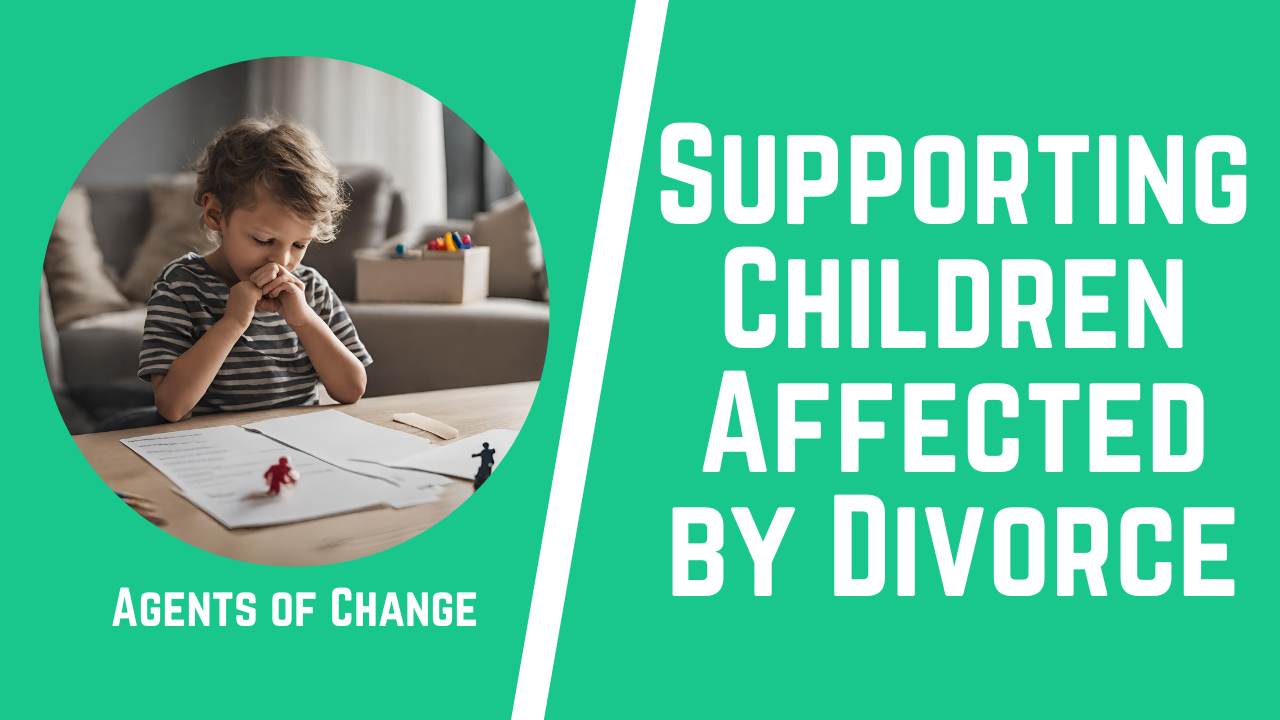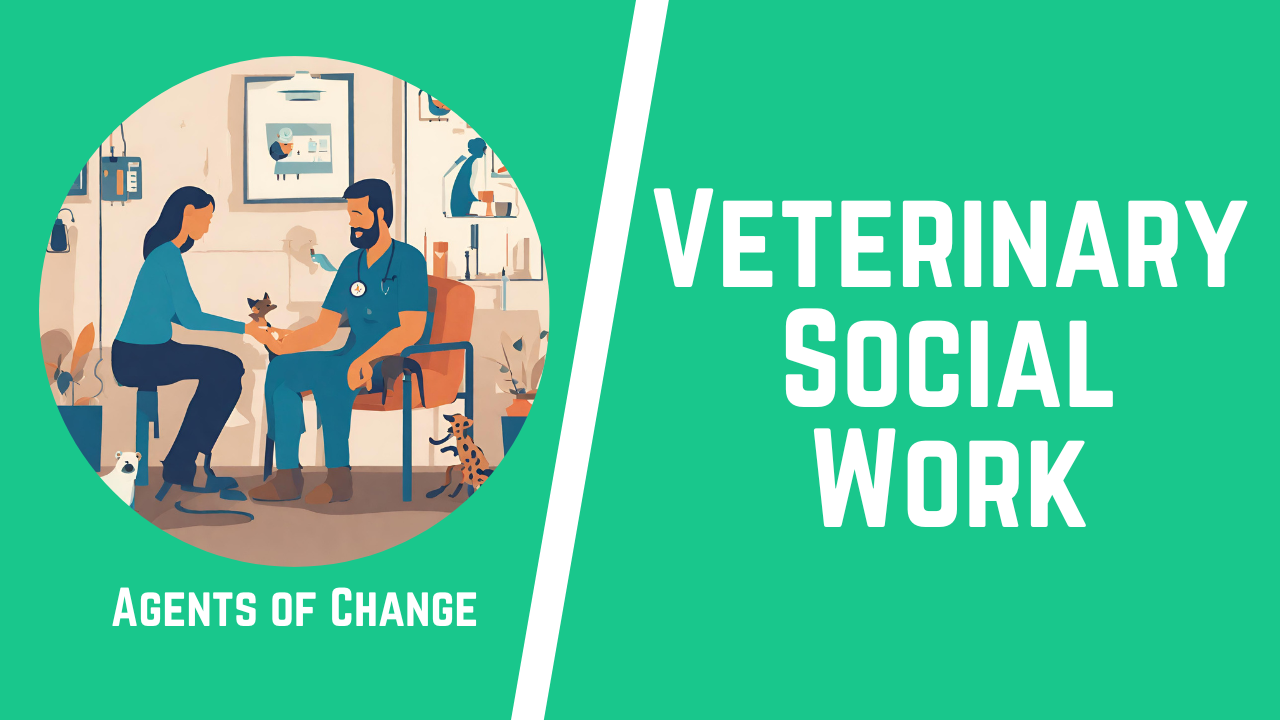Welcome to our deep dive into Parts Therapy in Social Work, a therapeutic approach that’s as enlightening as it is transformative. Imagine embarking on a journey inside yourself, discovering a hidden world where different facets of your personality coexist, sometimes in harmony, sometimes in conflict.
This is Parts Therapy, where the goal is to uncover these varying parts and bring them into a harmonious balance that promotes overall well-being. It’s a method that acknowledges our complexity and aims to leverage it towards our growth and healing.
In this comprehensive exploration, we’re diving headfirst into the nuances that make Parts Therapy a standout approach in Social Work. Whether you’re a seasoned Social Worker looking to broaden your toolkit or simply someone intrigued by human emotions and behaviors, this blog post is your gateway to understanding how Parts Therapy can illuminate the path to self-discovery and healing.
Did you know? Agents of Change Continuing Education offers Unlimited Access to 150+ CE courses for one low annual fee to meet your state’s requirements for Continuing Education credits and level up your career.
We’ve helped thousands of Social Workers with Continuing Education, learn more here about Agents of Change and claim your 5 free CEUs.
1) What Exactly is Parts Therapy?
Parts Therapy is a particularly fascinating and nuanced method, inviting both clients and therapists to explore the multifaceted nature of the self. At its heart, Parts Therapy operates on the premise that our personality is not a monolithic entity but a mosaic of various parts, each with its unique perspectives, feelings, and motivations. This approach aims to bring these disparate parts into dialogue and to foster internal harmony and a more cohesive sense of self.
Understanding the Basics
- Conceptual Foundation: Parts Therapy is grounded in the idea that we all have different aspects or ‘parts’ that make up our overall personality. These parts can sometimes be in conflict, leading to internal struggles and emotional distress.
- Therapeutic Goals: The primary aim is to identify, understand, and reconcile these parts to achieve psychological well-being. It’s about turning internal conflicts into conversations, leading to self-awareness and healing.
The Parts Therapy Process
- Identification of Parts: The first step involves identifying the different parts within an individual. This can range from parts that carry pain and trauma to those embodying joy and resilience.
- Understanding Each Part’s Role: Every part has a purpose, whether it’s protecting us from harm or pushing us towards our goals. Understanding these roles is crucial for the therapeutic process.
- Facilitating Dialogue: The therapist helps facilitate a dialogue between conflicting parts, aiming to understand their needs and fears. This step is essential for moving towards internal harmony.
Key Components of Parts Therapy
- Empathy Towards Self: Parts Therapy encourages individuals to cultivate empathy towards all their parts, even those perceived as negative or problematic.
- Internal Communication: Enhancing communication between parts to understand their motivations and resolve conflicts.
- Integration: The ultimate goal is the integration of all parts into a harmonious whole, where each part is acknowledged and valued.
Benefits of Parts Therapy in Social Work
- Enhanced Self-Understanding: Helps clients gain a deeper understanding of themselves and the origin of their behaviors and emotions.
- Conflict Resolution: Offers a pathway to resolving internal conflicts, leading to greater inner peace.
- Improved Emotional Regulation: By understanding the roles of different parts, individuals can better manage their emotions and reactions.
Parts Therapy in Social Work stands as a testament to the complexity and resilience of the human spirit. It provides a powerful framework for understanding the self in all its diversity, offering paths to healing and wholeness that are as unique as the individuals who embark on this therapeutic journey.
Learn more about Agents of Change Continuing Education. We’ve helped thousands of Social Workers with their Continuing Education and want you to be next!
2) Real-Life Applications of Parts Therapy
Parts Therapy has profound, tangible impacts on many aspects of individuals’ lives and well-being. This therapeutic approach finds application across a broad spectrum of scenarios, offering relief and resolution where other methods might falter.
Overcoming Trauma and PTSD
Trauma can fragment an individual’s sense of self, leaving parts of them stuck in the past, reliving the traumatic events over and over. Parts Therapy offers a way forward:
- Identifying the Traumatized Parts: Recognizing the parts that are frozen in time due to trauma.
- Creating Safe Spaces for Dialogue: Facilitating conversations between the traumatized parts and the rest of the self, encouraging understanding and compassion.
- Integration and Healing: Helping the individual integrate these parts into their present self, reducing the power of traumatic memories.
Managing Anxiety and Depression
Parts Therapy can be especially effective for individuals struggling with anxiety and depression, as it addresses the underlying parts contributing to these conditions.
- Identifying Anxious or Depressive Parts: Isolating the parts that contribute to feelings of anxiety and depression.
- Understanding Underlying Fears and Beliefs: Uncovering the fears, beliefs, and experiences driving these parts’ behaviors.
- Promoting Positive Coping Strategies: Encouraging parts to adopt healthier coping mechanisms, reducing the intensity of anxiety and depressive episodes.
Enhancing Relationship Dynamics
Relationships can often trigger or exacerbate internal conflicts. Parts Therapy can illuminate and address the parts playing roles in relationship difficulties:
- Identifying Relationship-Affecting Parts: Discovering the parts that react strongly in relational contexts (e.g., parts that fear abandonment or seek constant approval).
- Facilitating Understanding and Compassion: Helping individuals understand the origins of these parts, fostering empathy towards oneself and, by extension, towards others.
- Improving Communication and Interaction Patterns: By resolving internal conflicts, individuals can engage in healthier, more constructive ways of relating to others.
Supporting Addiction Recovery
Addiction often involves parts that seek to escape pain or chase pleasure without regard for the consequences. Parts Therapy can be a critical component of recovery:
- Identifying the Parts Involved in the Addiction Cycle: Recognizing parts that are driving addictive behaviors, whether for relief, escapism, or a sense of belonging.
- Understanding the Needs of These Parts: Exploring the needs these parts are trying to meet through addiction and seeking healthier ways to fulfill them.
- Integrating and Healing: Aiding the individual in integrating these parts into a healthier whole, where addiction is no longer seen as the only solution.
Personal Growth and Self-Discovery
Beyond addressing psychological issues, Parts Therapy can be a powerful tool for personal growth and self-discovery:
- Exploring Different Aspects of the Self: Encouraging individuals to get to know and accept all parts of themselves, even those previously ignored or undervalued.
- Uncovering Hidden Potentials: Identifying parts that hold creative talents, strengths, and aspirations, and integrating them into the individual’s sense of self.
- Fostering a Harmonious Inner World: Achieving a state of internal harmony where all parts work together towards common goals, leading to a more fulfilled and purposeful life.
Parts Therapy, with its nuanced understanding of the human psyche, offers a path to profound healing and transformation across these and many other areas of life.
By acknowledging and working with the different parts of our being, we can navigate the complexities of our emotions and experiences more effectively, leading to a richer, more integrated sense of self.
We’ve helped thousands of Social Workers with Continuing Education, learn more here about Agents of Change and claim your 5 free CEUs!
3) Navigating Challenges and Misconceptions in Parts Therapy
Despite its effectiveness and versatility, Parts Therapy, like any therapeutic approach, comes with its own set of challenges and misconceptions. Understanding and addressing these hurdles is crucial for both practitioners and clients to fully harness the benefits of Parts Therapy.
Common Misconceptions
- Multiplicity of Personalities: One prevalent misconception is equating the concept of parts with having multiple distinct personalities, akin to Dissociative Identity Disorder (DID). However, Parts Therapy operates on the principle that everyone has different aspects or parts of their personality, which is a normal and healthy aspect of human psychology.
- Over-Simplification: Another misconception is viewing Parts Therapy as an oversimplified solution to complex psychological issues. In reality, Parts Therapy is a nuanced approach that requires deep understanding and skill to navigate the complexities of the human psyche.
- Quick Fixes: Some may believe that Parts Therapy promises immediate results or quick fixes to deep-seated issues. However, true integration and healing require time, patience, and commitment to the therapeutic process.
Challenges in Practice
- Resistance from Parts: Individuals might experience resistance from certain parts that are wary of change or fearful of being exposed or vulnerable. This resistance can manifest as skepticism towards the therapy or an inability to engage fully with the process.
- Difficulty in Identifying Parts: Some clients may find it challenging to distinguish between their parts, especially if they have a less differentiated sense of self or if their parts are particularly entangled with their overall identity.
- Integrating Contradictory Parts: Facilitating dialogue and integration between parts that have opposing views or needs can be particularly challenging. It requires skillful mediation and negotiation to achieve a resolution that honors the needs and concerns of all parts involved.
Navigating These Challenges
- Educating Clients: Addressing misconceptions begins with educating clients about what Parts Therapy is and what it isn’t. Clear communication about the goals and process of therapy can set realistic expectations and dispel myths.
- Building Trust: Overcoming resistance and skepticism involves building a strong therapeutic alliance. Establishing trust and safety is paramount for clients to feel comfortable exploring and engaging with their parts.
- Skilled Facilitation: Therapists must hone their skills in identifying and mediating between parts. This includes being able to recognize subtle cues, facilitate effective communication, and navigate the complexities of conflicting parts.
- Patience and Persistence: Both therapists and clients must approach Parts Therapy with patience and persistence. Healing and integration are processes that unfold over time, often requiring revisiting and renegotiating as clients grow and change.
- Continuing Education: For therapists, engaging in continuing education, such as the courses offered by Agents of Change Continuing Education, is essential for staying informed about the latest developments in Parts Therapy and enhancing their practice.
Navigating the challenges and misconceptions associated with Parts Therapy requires a combination of education, skill, and compassion. By understanding and addressing these issues head-on, therapists and clients can work together to unlock the transformative potential of Parts Therapy, leading to deeper healing and more harmonious integration of the self.
4) FAQs – Parts Therapy
Q: How does Parts Therapy differ from other therapeutic approaches?
A: Parts Therapy is unique in its focus on recognizing and engaging with the various parts of an individual’s personality. Unlike traditional therapeutic approaches that may treat the individual as a singular entity, Parts Therapy operates on the understanding that we all possess different aspects or ‘parts’ of ourselves that can sometimes be in conflict or disharmony. This approach stands out by:
- Encouraging direct interaction and dialogue between these parts.
- Aiming for internal harmony and understanding as a path to healing.
- Providing a structured framework for exploring and reconciling the complexities of the self.
It integrates well with other therapeutic modalities but is distinct in its specific focus on the multiplicity of the self.
Q: Can Parts Therapy be applied to any age group?
A: Yes, Parts Therapy can be adapted to suit individuals across various age groups, from children to adults. However, the approach and techniques used may vary depending on the age and developmental stage of the client. For instance:
- Children and Adolescents: The therapy might use more imaginative and playful techniques to help them identify and communicate with their parts. This could include drawing, storytelling, or role-playing.
- Adults: The approach can be more conversational and reflective, using techniques like journaling, meditation, or specific dialoguing exercises to facilitate awareness and communication between parts.
It’s important for therapists to tailor their approach to be age-appropriate and to match the client’s cognitive and emotional development level.
Q: What are the signs that Parts Therapy might be beneficial for someone?
A: Parts Therapy could be particularly beneficial for individuals who:
- Experience internal conflict or feel torn between different desires, motivations, or reactions.
- Have undergone trauma and find parts of themselves stuck in past experiences, unable to move forward.
- Struggle with anxiety, depression, or other mental health issues that seem to have distinct triggers or manifestations within their personality.
- Notice patterns in their relationships or behaviors that they can’t seem to change, even though they’re aware of them.
- Are seeking a deeper understanding of themselves and wish to explore the complexities of their identity and experiences.
Anyone who recognizes these patterns in their life or feels like traditional therapy hasn’t fully addressed their needs might find Parts Therapy to be a valuable and enlightening approach.
5) Conclusion
It’s clear that Parts Therapy offers a unique and profound pathway to understanding and healing. The beauty of Parts Therapy lies in its ability to honor the complexity of the human experience, acknowledging that we are not singular entities but a tapestry of thoughts, feelings, and behaviors.
By engaging with the various parts of ourselves, we unlock the potential for deep self-awareness and transformation, paving the way for a more harmonious internal existence. This method both aims to alleviate symptoms and seeks to foster a profound reconciliation within the self, a goal that resonates deeply within the ethos of Social Work.
For Social Workers and therapists, incorporating Parts Therapy into their practice is not just about adding another tool to their therapeutic toolkit. It’s about embracing a perspective that views individuals in their full complexity and potential.
The journey towards mastering Parts Therapy is one of continuous learning and growth, something that platforms like Agents of Change Continuing Education support by providing courses that dive into the nuances of this and other therapeutic techniques. For those in the helping professions, understanding and applying Parts Therapy can significantly enhance the support and guidance they provide to those in need, facilitating journeys of healing and self-discovery.
Learn more about Agents of Change Continuing Education. We’ve helped thousands of Social Workers with their Continuing Education and want you to be next!
————————————————————————————————————————————————
► Learn more about the Agents of Change Continuing Education here: https://agentsofchangetraining.com
About the Instructor, Meagan Mitchell: Meagan is a Licensed Clinical Social Worker and has been providing Continuing Education for Social Workers for more than 8 years. From all of this experience helping others pass their exams, she created Agents of Change Continuing Education to help Social Workers stay up-to-date on the latest trends, research, and techniques.
#socialwork #socialworker #socialwork #socialworklicense #socialworklicensing #continuinged #continuingeducation #ce #socialworkce #freecesocialwork #lmsw #lcsw
Disclaimer: This content has been made available for informational and educational purposes only. This content is not intended to be a substitute for professional medical or clinical advice, diagnosis, or treatment















